We have much more to do and your continued support is needed now more than ever.
May the 4th Be with You: Star Wars’ Inspiring Wildlife
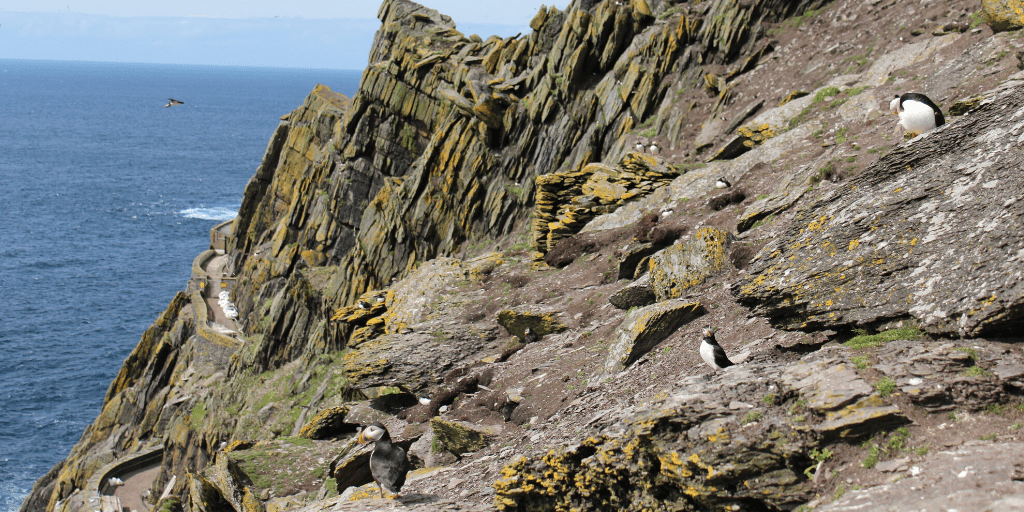
In honor of May the 4th — a look at how fiction meets reality in a galaxy far, far away.
SPOILER ALERT: First off, let me warn you, spoilers coming. If you haven’t seen the original Star Wars series, released way back in 1977, I’m guessing you don’t care about spoilers but if for some reason you haven’t gotten around to it please consider hyper-jumping your way into this universe.
With the release of the final episode the Skywalker Saga portion of Star Wars in December 2019, fans worldwide flocked to theatres to witness the concluding tale. To think it was only in December, and as I write this, four months ago. It feels like a lifetime. With the COVID-19 pandemic affecting our nation and world, so much has changed since then. However, with a stay-in-place directive in effect, this, socially isolating, and sometimes mind-numbing time, has also allowed me to deep dive into some of my favorite fictional universes; Star Trek, Star Wars; Harry Potter, Lord of the Rings. Anyone else noticing a theme?
After completing the new Mandalorian show, I asked my partner, “what if baby Yoda were real?” Would he be unique? What does he eat? Across George Lucas’s entire fictional universe, only a handful of Yoda’s species even have mention. Even baby Yoda, as the internet is wont to call him, has no name. We only know his gender and that’s only, as we Earth people understand gender in its binary form. What if Yoda’s species are non-binary, asexual, or even reproduce via cloning?

But baby Yoda isn’t wildlife per se, he’s a sentient being, who nonetheless piqued my curiosity about the wildlife from Star Wars. Am I the only one who is insanely curious how the ice-crystal foxes of the mineral planet Crait function within their ecosystem? How cute are Porgs? But can they fly? What are the mating habits of Orbaks? Do banthas enjoy living in those hot, arid climates or would they be more comfortable on the icy home world of Hoth, where our heroes utilize the rugged tauntauns? I find myself asking more questions than there are answers, and find myself using my biology background to invent full life histories for each of these creatures.
Many and more of these fictional species of flora and fauna were assuredly drawn, literally and figuratively, from real life. Which illustrates what a wild and diverse set of species exist in our world. This isn’t biomimicry per se—the design and production of materials, structures, and systems modeled on biological entities and processes —more like a creative reinterpretation of the natural world. George Lucas and other creators imagined a universe from what they saw in real life.
Let’s begin, with the cutest creature in the Star Wars universe, non-baby Yoda division, the fictional Porg. To me, they appear to be a cross between a puffin and a penguin, with the wide eyes of a Harp Seal. Interestingly I was close, but their true inspiration included a pug dog instead of a penguin. In fact, the Porgs were introduced to the Star Wars universe because real-life puffins covered the filming location for Luke Skywalker’s Jedi hideaway on the planet of Ahch-To—the real-life wildlife preserve of Skellig Michael. These native seabirds are colonial nesters on rocky islands, returning year after year. These hardy creatures make a big splash into life as eggs, layed cliff-side and abandoned by parents, half-fly half-fall from the cliff into the waters below where it instinctively knows how to swim and fend for itself.
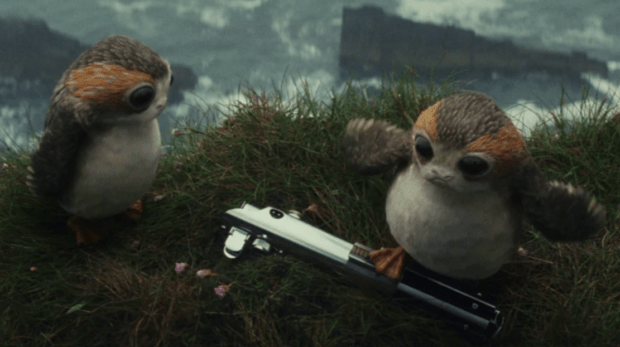
Porgs on the fictional world Ahch-To. Credit: Wookiepedia. 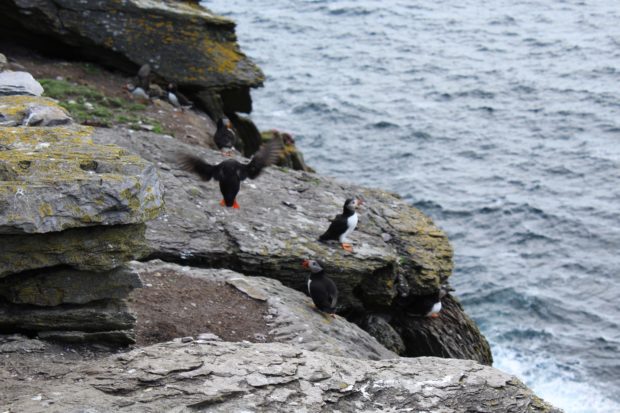
Atlantic Puffins on Skellig Michael. Photo Credit: Shelby Clemente.
The horses we see galloping across space, ridden by Po and his new friend Jannah, in Star Wars: The Rise of Skywalker are called Orbaks and native to the desert planet Pasaana. But I need to know, are the ones with the longer tusks male or female and do they fight with each other for breeding rights? Much like our native Elk, or Cervus canadensis, or sea dwelling Walrus, do male Orbaks maintain harems? Bull elk, during the rut, or breeding season will congregate females in a harem, and bugle to ward off opposing males and attract more mates.
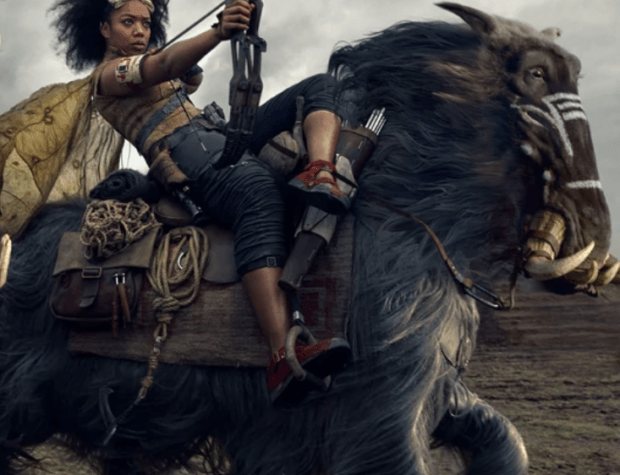
Orbak. Credit: Wookiepedia. 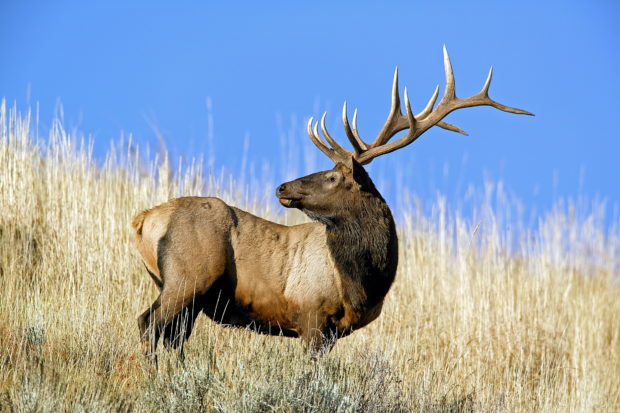
Bull elk. Photo Credit: William Wiley
In most of the Skywalker saga, banthas are either seen or mentioned onscreen, in numerous planets and mostly as domesticated beasts of burden. They look like woolly mammoths, a Pleistocene era monolith that roamed the northern tundra sporting huge tusks. However, what struck me as odd was I thought a mammoth would be terribly hot in the arid deserts of fictional Tatooine. But the similarities don’t stop with the ancient, now extinct, woolly mammoth; banthas look like a cross between our very real and threatened modern-day elephant and muskoxen. Even onscreen all bantha images in Star Wars: Episode IV A New Hope, were shot using a 22-year old female Asian elephant named Mardji.
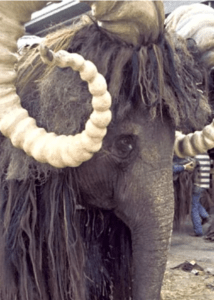
Muskoxen (Ovibos moschatus) are uniquely adapted to living in frigid temperatures, with large curving horns, and when threatened form a small but mighty protective circle around the young, or calves. It’s not hard to see where George Lucas derived inspiration.
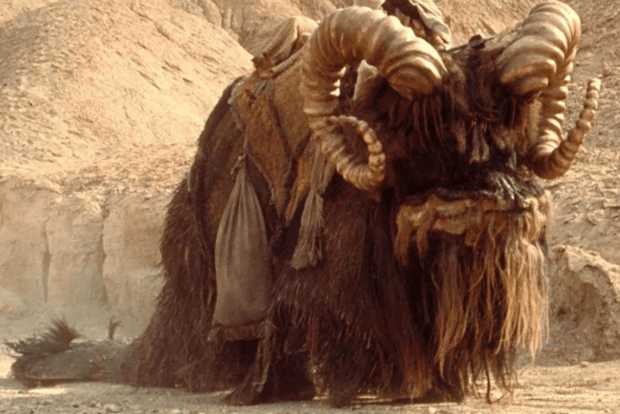
Bantha. Credit: Wookiepedia. 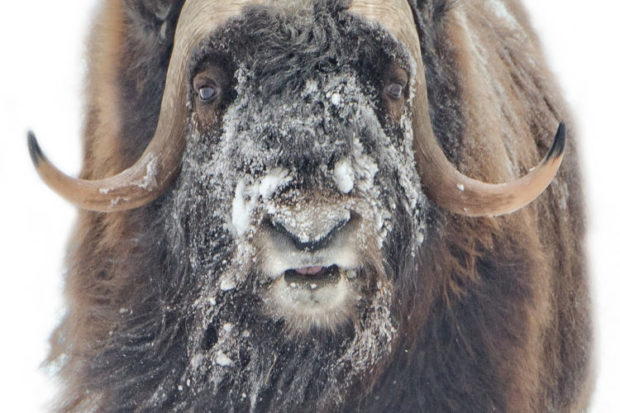
Muskox. Photo Credit: Elizabeth Haslam.
Humor me one last time, but the ice-crystal foxes, or Vulptices fascinate me. Their name is a cross between the words Vulpes, genus for foxes, and vertices, the many angles on a crystalline structure. What captures my imagination however, is wondering what they eat in a world where we only see crystals and salt? Do they reflect light from their bodies, as a way to keep cool themselves? Why do they appear white or translucent? Much like our real polar bears (Ursus maritimus) their white fur is actually comprised of two colors, dark skin and translucent hair, resulting in effective camouflage. According to an article written by Empire, Neal Scanlan the creature effects supervisor for The Last Jedi, said “they’ve fed off this planet for so long that their fur has become crystalline. They’ve taken on the very surface of the planet they live on.”

Vulptex. Credit: Wookiepedia. 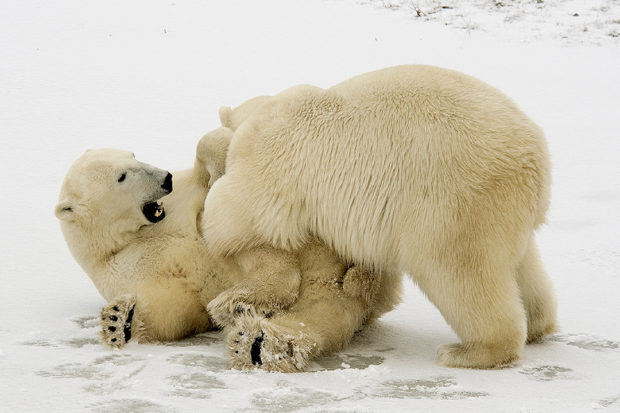
Polar bears. Photo Credit: Bonnie Flamer.
If you’re a fan of Star Wars, or of wildlife, or in my case both, it’s hard not to be fascinated by the creatures in the background and long to learn more about them. But remember, the worlds they reside are fiction. The natural world and its wild inhabitants are critical, emotional, and very real inspirations for the fantasy and science-fiction universes so many of us cherish, either in written word or onscreen. The charismatic species like polar bears and elephants that provide inspiration can be equally exciting as our American goldfinches and fox snakes. If you connect with any of Lucas’ imaginary creatures, Rowling’s magical beings, or Tolkien’s iconic characters, I implore you to learn more about their real-life counterparts. Seek to learn their stories and discover they’re worth protecting.
Look at the species around us on Earth, as they exist now, and as we hope to see them long into the future. Elk, puffins, penguins, muskoxen, and polar bears are just the tip of the galactic iceberg. Whether you’re stuck indoors reading (or rereading) a good book, escaping into the vast Star Wars universe, or getting out and safely enjoying what we have on our real planet Earth, I ask that you help us maintain these spectacular species long into the future…and May the Force, or Fauna, Be with You.
To help one of America’s beautiful animals please consider symbolically “Adopting an Animal” of these very real creatures, through the National Wildlife Federation Atlantic puffins, American goldfinches, Arctic fox, and polar bears.





















